Advertisements
Advertisements
प्रश्न
Draw a line segment of length 12.8 cm. Using compasses, divide it into four equal parts. Verify by actual measurement.
उत्तर
- Draw a line segment `overline"XY"` of 12.8 cm.

- Draw a circle, while taking point X as centre and radius more than half of XY.
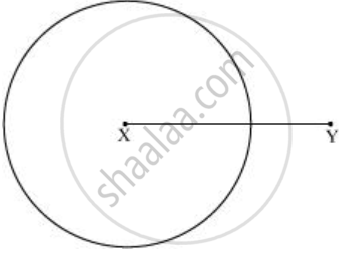
- With same radius and taking centre as Y, again draw arcs to cut the circle at A and B. Join AB which intersects `overline"XY"` at M.
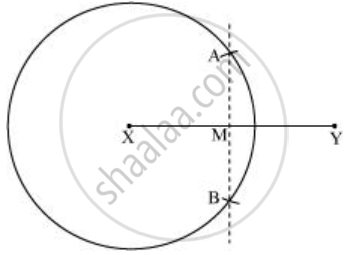
- Taking X and Y as centres, draw two circles with radius more than half of `overline"XM"`.
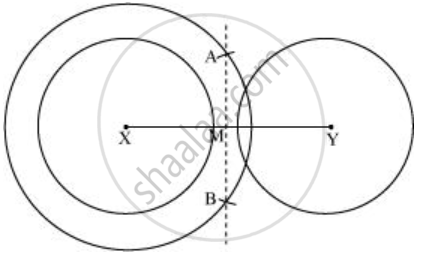
- With same radius and taking M as centre, draw arcs to intersect these circles at P, Q and R, S.
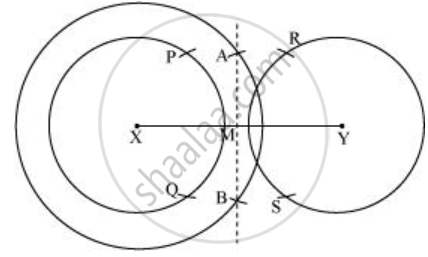
- Join PQ and RS. These are intersecting `overline"XY"` at T and U.
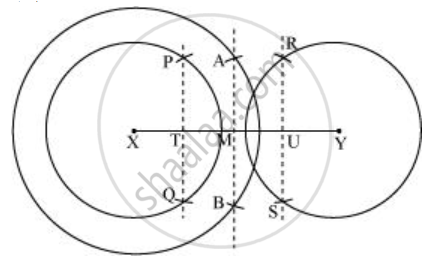
-
Now, `overline"XT"` = `overline"TM"` = `overline"MU"` = `overline"UY"`. These are 4 equal parts of `overline"XY"`.
By measuring these line segments with the help of ruler, we will find that each is of 3.2 cm.
APPEARS IN
संबंधित प्रश्न
Draw a line segment PQ = 4.8 cm. Construct the perpendicular bisector of PQ.
Draw a line segment AB = 5.5 cm. Mark a point P, such that PA = 6 cm and PB = 4.8 cm. From point P, draw a perpendicular to AB.
Draw a line segment of given length and construct a perpendicular bisector to line segment using scale and compass
8 cm
Draw a line segment of given length and construct a perpendicular bisector to line segment using scale and compass
7 cm
In figure, the point C is the image of point A in line l and line segment BC intersects the line l at P.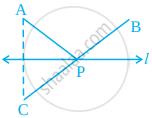
(a) Is the image of P in line l the point P itself?
(b) Is PA = PC?
(c) Is PA + PB = PC + PB?
(d) Is P that point on line l from which the sum of the distances of points A and B is minimum?
Copy figure on your notebook and draw a perpendicular from P to line m using (i) set squares (ii) protractor (iii) ruler and compass. How many such perpendicular are you able to draw?
Bisect a straight angle, using ruler and compasses. Measure each part.
Draw `overline"AB"` of length 7.3 cm and find its axis of symmetry.
With `overline"PQ"` of length 6.1 cm as diameter, draw a circle.
Draw any angle with vertex O. Take a point A on one of its arms and B on another such that OA = OB. Draw the perpendicular bisectors of `overline"OA"` and `overline"OB"`. Let them meet at P. Is PA = PB ?
